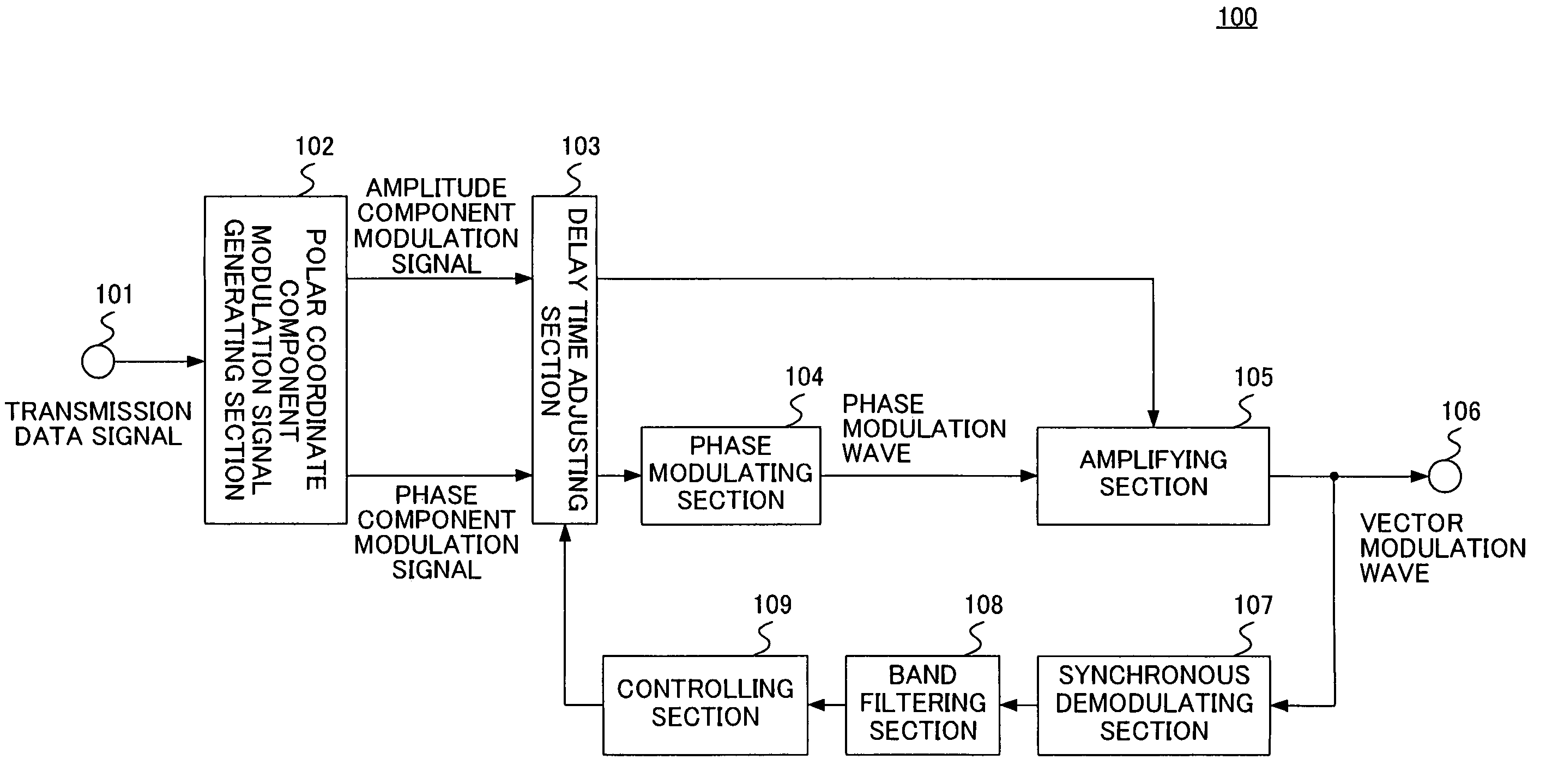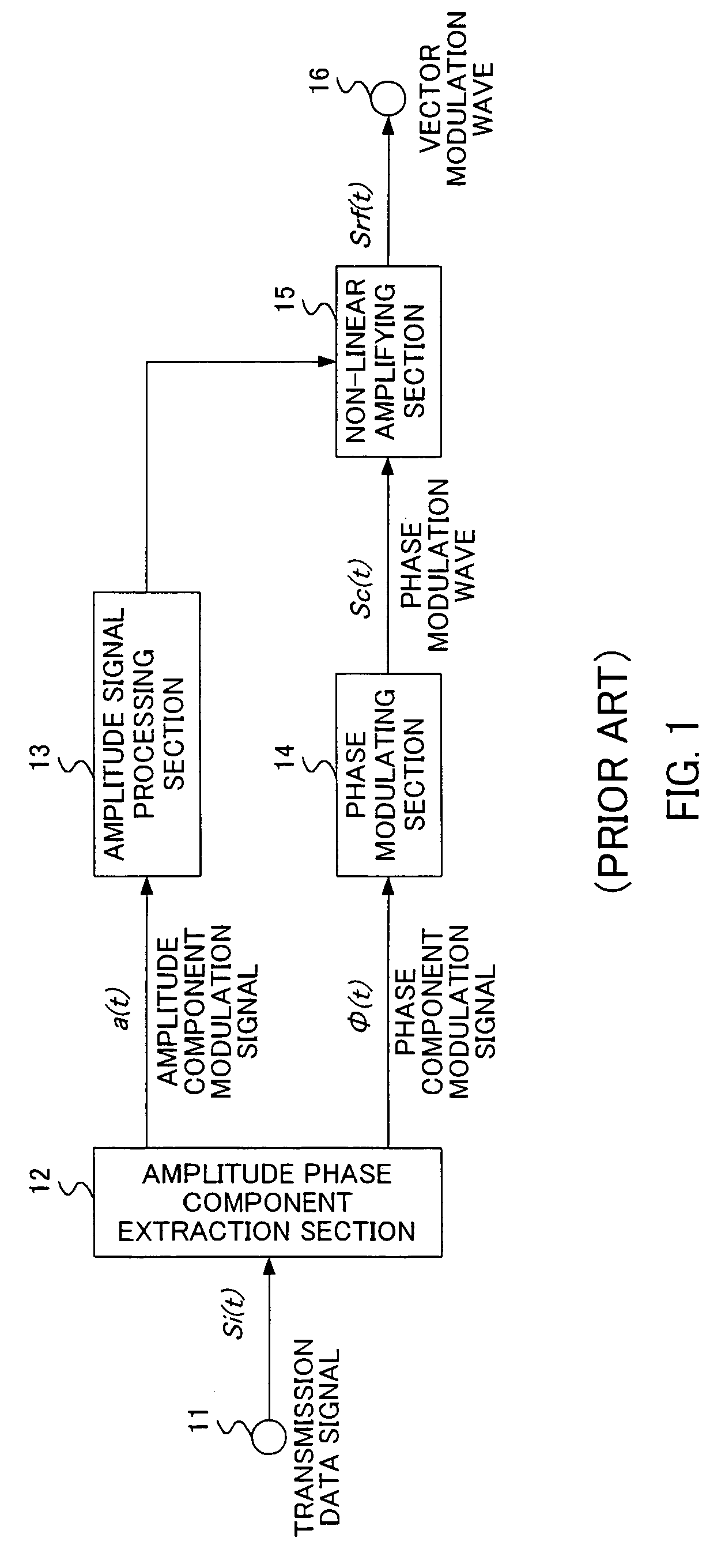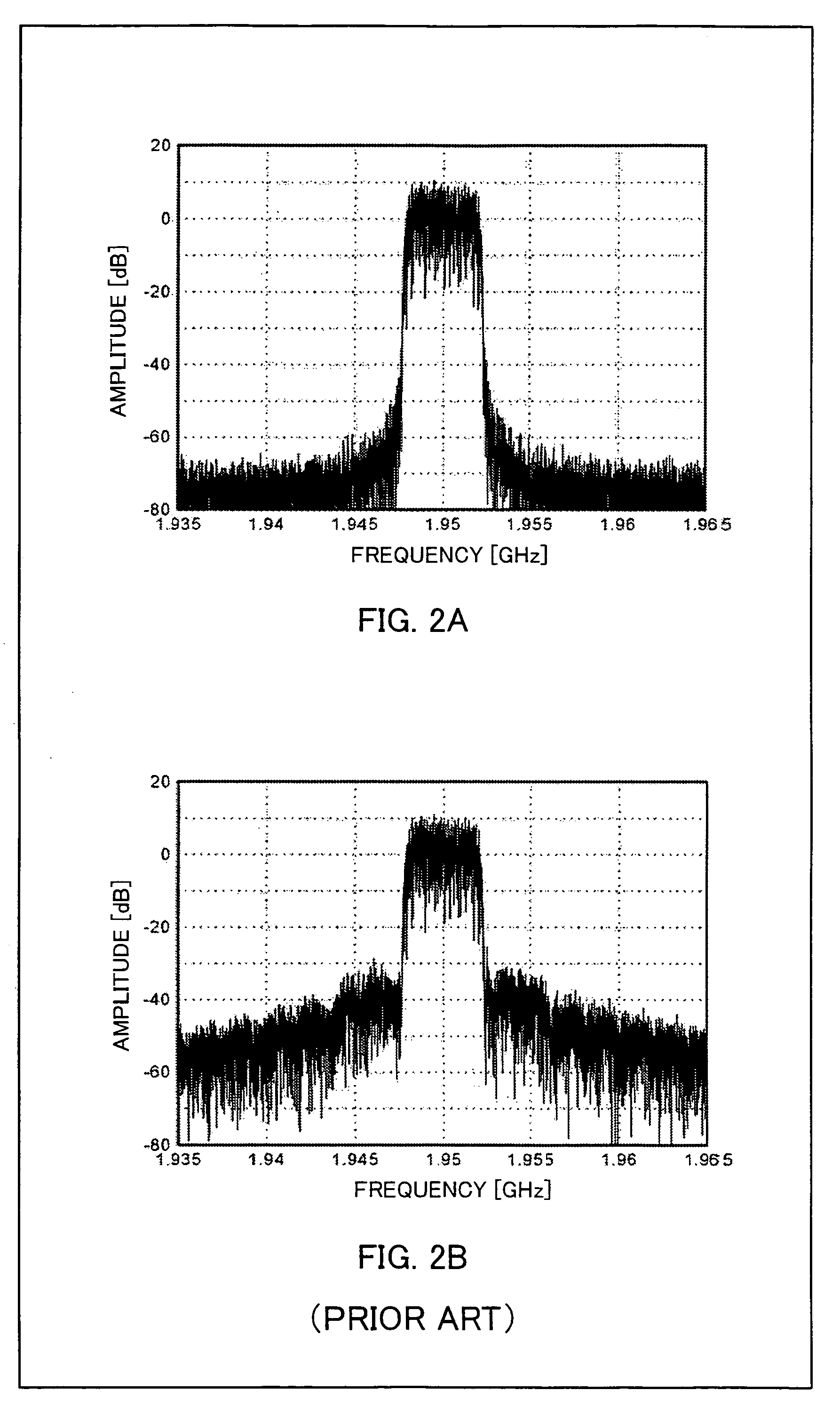Transmission apparatus, communication apparatus and mobile radio apparatus
a communication apparatus and transmission apparatus technology, applied in the field of transmission apparatus, can solve the problems of increasing the size of the transmission apparatus, increasing heat generation, and short usage time, and achieve the effect of reliable correction and control of delay
- Summary
- Abstract
- Description
- Claims
- Application Information
AI Technical Summary
Benefits of technology
Problems solved by technology
Method used
Image
Examples
first embodiment
[0047]FIG. 4 is a block diagram showing a configuration for a transmission apparatus of a first embodiment of the present invention. Transmission apparatus 100 shown in FIG. 4 is comprised of transmission data signal input terminal 101 inputting a transmission data signal, polar coordinate component modulation signal generating section 102 forming an amplitude component modulation signal and a phase component modulation signal based on an inputted transmission data signal, delay time adjusting section 103 changing the delay time of an amplitude component modulation signal and a phase component modulation signal, phase modulating section 104 forming a phase modulation wave where a carrier wave is phase-modulated by the phase component modulation signal, amplifying section 105 receiving as input the phase modulation wave at a signal input terminal of transmission apparatus 100, with the amplitude component modulation signal applied to a power supply voltage terminal of transmission ap...
second embodiment
[0057]FIG. 6 is a block diagram showing a configuration for transmission apparatus of this embodiment. In FIG. 6, components that are the same as in FIG. 4 described in the first embodiment are given the same numerals and description thereof is omitted. Polar coordinate component modulation signal generating section 310 of transmission apparatus 300 of this embodiment is comprised of in-phase / quadrature component modulation signal generating section 311 and polar coordinate converting section 302. Further, in-phase / quadrature component modulation signal generating section 311 has sine-wave generating section 301 and phase shifting section 303.
[0058]In the case of this embodiment, in-phase / quadrature component modulation signal generating section 311 forms a first sine wave signal, as an in-phase component modulation signal, having a first frequency f1 and a first phase angle p1, and a second sine wave signal, as a quadrature component modulation signal, having a frequency that is th...
third embodiment
[0072]FIG. 10 shows a configuration for transmission apparatus of the present embodiment. Transmission apparatus 400 of this embodiment is different from transmission apparatus 300 of the second embodiment shown in FIG. 6 in that rather than having sine-wave generating section 301 and phase shifting section 303, in-phase / quadrature component modulation signal generating section 411 has sine wave generating sections 401 and 402, phase shifting sections 403 and 404, and adding sections 405 and 406.
[0073]Sine wave generating section 401 generates a sine wave of frequency f1 and transmits this to phase shifting section 403 and adding section 405. Sine wave generating section 402 generates a sine wave of frequency f2 that is different from frequency f1 and transmits this to phase shifting section 404 and adding section 405.
[0074]Phase shifting section 403 shifts and outputs the phase of the inputted sine wave in such a manner that the difference in the phase angle of the inputted sine wa...
PUM
 Login to View More
Login to View More Abstract
Description
Claims
Application Information
 Login to View More
Login to View More - R&D
- Intellectual Property
- Life Sciences
- Materials
- Tech Scout
- Unparalleled Data Quality
- Higher Quality Content
- 60% Fewer Hallucinations
Browse by: Latest US Patents, China's latest patents, Technical Efficacy Thesaurus, Application Domain, Technology Topic, Popular Technical Reports.
© 2025 PatSnap. All rights reserved.Legal|Privacy policy|Modern Slavery Act Transparency Statement|Sitemap|About US| Contact US: help@patsnap.com



